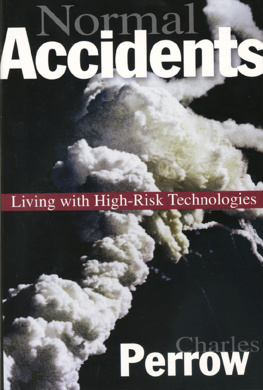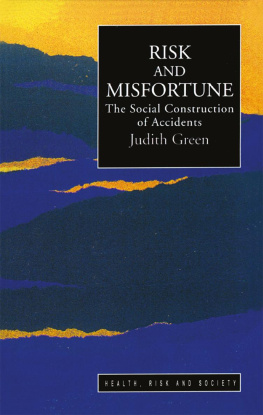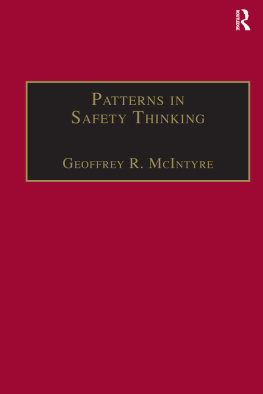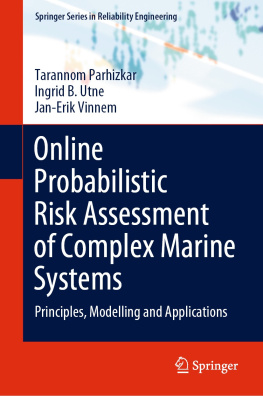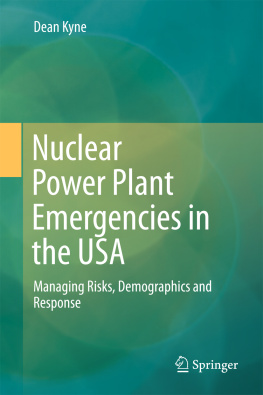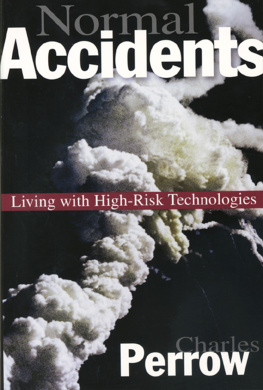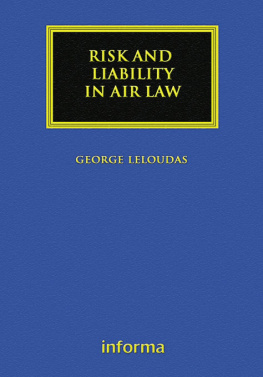
Normal Accidents
NORMAL
ACCIDENTS
Living with High-Risk
Technologies
With a New Afterword and a
Postscript on the Y2K Problem
CHARLES PERROW
Princeton University Press
Princeton, New Jersey
Copyright 1999 by Princeton University Press
Published by Princeton University Press, 41 William Street,
Princeton, New Jersey 08540
In the United Kingdom: Princeton University Press,
Chichester, West Sussex
All Rights Reserved
First published by Basic Books 1984
Library of Congress Cataloging-in-Publication Data
Perrow, Charles.
Normal accidents : living with high-risk technologies / Charles Perrow
p. cm.
Reprint. Originally published: New York : Basic Books, 1984.
includes bibliographical references.
ISBN 0-691-00412-9 (pbk. : alk. paper)
1. Industrial accidents. 2. TechnologyRisk assessment.
3. Accidents. I. Title.
HD7262 .P55 1999
363.1dc21 9932990
The paper used in this publication meets the minimum requirements of
ANSI/NISO Z39.48-1992 (R1997) ( Permanence of Paper )
http://pup.princeton.edu
Printed in the United States of America
ISBN-13: 978-0-691-00412-9 (pbk.)
ISBN-10: 0-691-00412-9 (pbk.)
Contents
Normal Accidents
ABNORMAL BLESSINGS
I started this book, without knowing I was starting a book, in August of 1979. Since then I have lived with it at three institutions, under three research grants, and have worked with a variety of secretaries, research assistants, colleagues and some technical critics. In this acknowledgments section I wish not only to list a few of the numerous people who helped me, some of whom will be unknown and perhaps a matter of indifference to most readers, but also to give some sense of the extraordinary good fortune and flow of resources that can take place in academic life. Most readers have only a dim sense of how a book comes to be written. In a book on normal accidents, I think it is appropriate to acknowledge my abnormal blessings. Just as complex systems threaten to bring us down, as I will argue in this book, so do complex systems bring us unimagined and probably undeserved bounty. Here is an accounting of my bounty.
When Professor Cora Marrett was appointed to the Presidents Commission on the Accident at Three Mile Island, she met with David Sills of the Social Science Research Council, of which she was a board member, to discuss plans for some social science input into what threatened to be an entirely engineering-oriented investigation. They asked a number of people to write ten page reports for the Commission. I turned down my assignment, that of reliability in industry, but offered to do an organizational analysis if I could think of one. They gave me transcripts of the hearings of May, June, and July, 1979 and a three-week deadline. Since I was in the mountains I asked graduate students, notably Lee Clarke and Mitchel Abalofia to send me books and articles on accidents in nuclear power plants and in other locations. With their excellent critiques I produced a forty-page paper on time, and in it were the essential ideas for this book. If only books came as fast as ideas!
Producing the book took another three and a half years with delays and cost overruns to match those of the nuclear industry itself. First the University Grants Committee of the State University of New York provided a few dollars to hire some students to do library work, and then the Sociology Program of the National Science Foundation funded an ambitious grant proposal to investigate accidents in high-risk systems. In addition to funds to hire graduate research assistants and Mary Luyster (the first of a string of remarkable secretaries), it gave me some time free from teaching duties and helped make it possible to accept an invitation to spend a year at a think tankthe Center for Advanced Study in the Behavioral Sciences, at Stanford, California. You and I would not be meeting this way, Dear Reader, were it not for these two beneficent institutions, The National Science Foundation and the Behavioral Science Center.
The grant allowed me to put together a toxic and corrosive group of graduate research assistants who argued with me and each other for a year at my university in Stony Brook, before I went to California. Abalofia and Clarke were joined by Leo Tasca, Kevin McHale, and others in intense research and discussions which made us the gloomiest group on campus, known for our gallows humor. At our Monday meetings one of us would say, It was a great weekend for the project, and rattle off the latest disasters. Even quiet Mary Luyster was occasionally seen to be reading disaster books during her lunch hour.
At the Center for Advanced Study in the Behavioral Sciences, I was very fortunate in recruiting a graduate student in political science, Jeff Stewart, who did the major work on the weapons and space programs, and brought his own expertise as a former producer for public television to the project. Meanwhile, Mitch Abalofia had single handedly produced an excellent draft of the DNA material and gained command of that field in an incredibly short time. Lee Clarke was off studying a disaster that is not covered in this book, the dioxin contamination of the Binghamton Office Building. Leo Tasca went from marine accidents to a study of the political economy of the shipping industry. All of our lives were changed by Three Mile Island. At the time of the accident I was researching the emergence of organizations in the nineteenth century. I still hope to return to that comparatively sane world.
While still at Stony Brook my initial paper caught the attention of a member of the National Academy of Sciences, and I was asked to serve on their newly formed Committee on Human Factors Research. This fortuitous appointment gave me access to people and documents that I never knew existed. Richard Pew, the Chairman, and Tom Sheridan led me to the work of Jens Rassmussen in Denmark and to other engineering literature. Baruch Fischhoff put me in touch with Dr. John Gardenier of the Coast Guard, whose original papers and critical commentary proved valuable. The original Social Science Research Council Panel had already put me in touch with Paul Slovic and Fischhoff, and despite my extremely negative and off-the-cuff criticisms of their paper for that panel, they sent me and have continued to supply me with invaluable material and a crash course in cognitive psychology. It is an example of the non-defensive invisible college at its best. I left the Committee on Human Factors Research because of policy differences, but Pew, Fischhoff, Sheridan, and others introduced me to unknown worlds. A paper that I did for that committee came to the attention of the sponsors of the committee, the Office of Naval Research, and helped me get a summer grant.
That grant brought me into contact with some unusual research in the Naval Personnel Research Station in San Diego, an exemplary human factors program used on the Boeing 767, and into contact with Rex Hardy and his colleagues at the Ames Research Center of the National Aeronautics and Space Administration. Hardy provided invaluable data, great encouragement, and put me in touch with Harry Orlady and his staff who commented generously and Jerry Lederer of the Flight Safety Foundation who set me straight on a vast number of points but could not convince me on others.
The center in California allows you to stay for only one year, and 1 have never regretted a leave taking as much as that one. The intellectual, library and secretarial resources were unparalleled at that institution. Director Gardner Lindzey put scholarship first and red tape last. Ron Rice carefully critiqued some drafts. John Ferejohn introduced me to personal computers and wrote a simple word processing program for my IBM PC until, fortuitously, a remarkable gentleman in Santa Barbara named Camilo Wilson wrote his excellent, user-friendly Volkswriter program. The computer and that program brought this book out at least six months earlier than I had expected.
Next page
